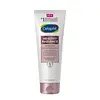What's inside
What's inside
 Key Ingredients
Key Ingredients

No key ingredients
 Benefits
Benefits

 Concerns
Concerns

 Ingredients Side-by-side
Ingredients Side-by-side

Water
Skin ConditioningPropanediol
SolventGlycerin
HumectantSodium Cocoamphoacetate
CleansingCoco-Betaine
CleansingDisodium Cocoyl Glutamate
CleansingDehydroxanthan Gum
Emulsion StabilisingRosa Damascena Flower Water
MaskingSodium Chloride
MaskingCitric Acid
BufferingSodium Cocoyl Glutamate
CleansingCaprylyl Glyceryl Ether
CleansingCaprylhydroxamic Acid
Leuconostoc/Radish Root Ferment Filtrate
Antimicrobial1,2-Hexanediol
Skin ConditioningAnanas Sativus Fruit Extract
Skin ConditioningWater, Propanediol, Glycerin, Sodium Cocoamphoacetate, Coco-Betaine, Disodium Cocoyl Glutamate, Dehydroxanthan Gum, Rosa Damascena Flower Water, Sodium Chloride, Citric Acid, Sodium Cocoyl Glutamate, Caprylyl Glyceryl Ether, Caprylhydroxamic Acid, Leuconostoc/Radish Root Ferment Filtrate, 1,2-Hexanediol, Ananas Sativus Fruit Extract
Water
Skin ConditioningGlycerin
HumectantCocamidopropyl Betaine
CleansingGluconolactone
Skin ConditioningNiacinamide
SmoothingSodium Methyl Cocoyl Taurate
CleansingPEG-120 Methyl Glucose Trioleate
CleansingSodium Lauroyl Methyl Isethionate
CleansingSodium Chloride
MaskingDi-PPG-2 Myreth-10 Adipate
EmollientSodium Benzoate
MaskingPEG-150 Distearate
EmulsifyingSodium Methyl Oleoyl Taurate
CleansingSodium Cocoyl Isethionate
CleansingPropanediol
SolventCoconut Acid
CleansingAlcohol
AntimicrobialSodium Hydroxide
BufferingAchillea Millefolium Flower/Leaf/Stem Extract
Skin ConditioningTrisodium Ethylenediamine Disuccinate
Malva Sylvestris Flower/Leaf/Stem Extract
Skin ConditioningMelissa Officinalis Leaf Extract
Skin ConditioningMentha Piperita Leaf Extract
Skin ConditioningPrimula Veris Flower Extract
Skin ConditioningAlchemilla Vulgaris Flower/Leaf/Stem Extract
AstringentVeronica Officinalis Flower/Leaf/Stem Extract
AstringentBHA
AntioxidantWater, Glycerin, Cocamidopropyl Betaine, Gluconolactone, Niacinamide, Sodium Methyl Cocoyl Taurate, PEG-120 Methyl Glucose Trioleate, Sodium Lauroyl Methyl Isethionate, Sodium Chloride, Di-PPG-2 Myreth-10 Adipate, Sodium Benzoate, PEG-150 Distearate, Sodium Methyl Oleoyl Taurate, Sodium Cocoyl Isethionate, Propanediol, Coconut Acid, Alcohol, Sodium Hydroxide, Achillea Millefolium Flower/Leaf/Stem Extract, Trisodium Ethylenediamine Disuccinate, Malva Sylvestris Flower/Leaf/Stem Extract, Melissa Officinalis Leaf Extract, Mentha Piperita Leaf Extract, Primula Veris Flower Extract, Alchemilla Vulgaris Flower/Leaf/Stem Extract, Veronica Officinalis Flower/Leaf/Stem Extract, BHA
 Reviews
Reviews

Ingredients Explained
These ingredients are found in both products.
Ingredients higher up in an ingredient list are typically present in a larger amount.
Glycerin is already naturally found in your skin. It helps moisturize and protect your skin.
A study from 2016 found glycerin to be more effective as a humectant than AHAs and hyaluronic acid.
As a humectant, it helps the skin stay hydrated by pulling moisture to your skin. The low molecular weight of glycerin allows it to pull moisture into the deeper layers of your skin.
Hydrated skin improves your skin barrier; Your skin barrier helps protect against irritants and bacteria.
Glycerin has also been found to have antimicrobial and antiviral properties. Due to these properties, glycerin is often used in wound and burn treatments.
In cosmetics, glycerin is usually derived from plants such as soybean or palm. However, it can also be sourced from animals, such as tallow or animal fat.
This ingredient is organic, colorless, odorless, and non-toxic.
Glycerin is the name for this ingredient in American English. British English uses Glycerol/Glycerine.
Learn more about GlycerinPropanediol is an all-star ingredient. It softens, hydrates, and smooths the skin.
It’s often used to:
Propanediol is not likely to cause sensitivity and considered safe to use. It is derived from corn or petroleum with a clear color and no scent.
Learn more about PropanediolChances are, you eat sodium chloride every day. Sodium Chloride is also known as table salt.
This ingredient has many purposes in skincare: thickener, emulsifier, and exfoliator.
You'll most likely find this ingredient in cleansers where it is used to create a gel-like texture. As an emulsifier, it also prevents ingredients from separating.
There is much debate on whether this ingredient is comedogenic. The short answer - comedogenic ratings don't tell the whole story. Learn more about comegodenic ratings here.
The concensus about this ingredient causing acne seems to be divided. Research is needed to understand if this ingredient does cause acne.
Scrubs may use salt as the primary exfoliating ingredient.
Learn more about Sodium ChlorideWater. It's the most common cosmetic ingredient of all. You'll usually see it at the top of ingredient lists, meaning that it makes up the largest part of the product.
So why is it so popular? Water most often acts as a solvent - this means that it helps dissolve other ingredients into the formulation.
You'll also recognize water as that liquid we all need to stay alive. If you see this, drink a glass of water. Stay hydrated!
Learn more about Water